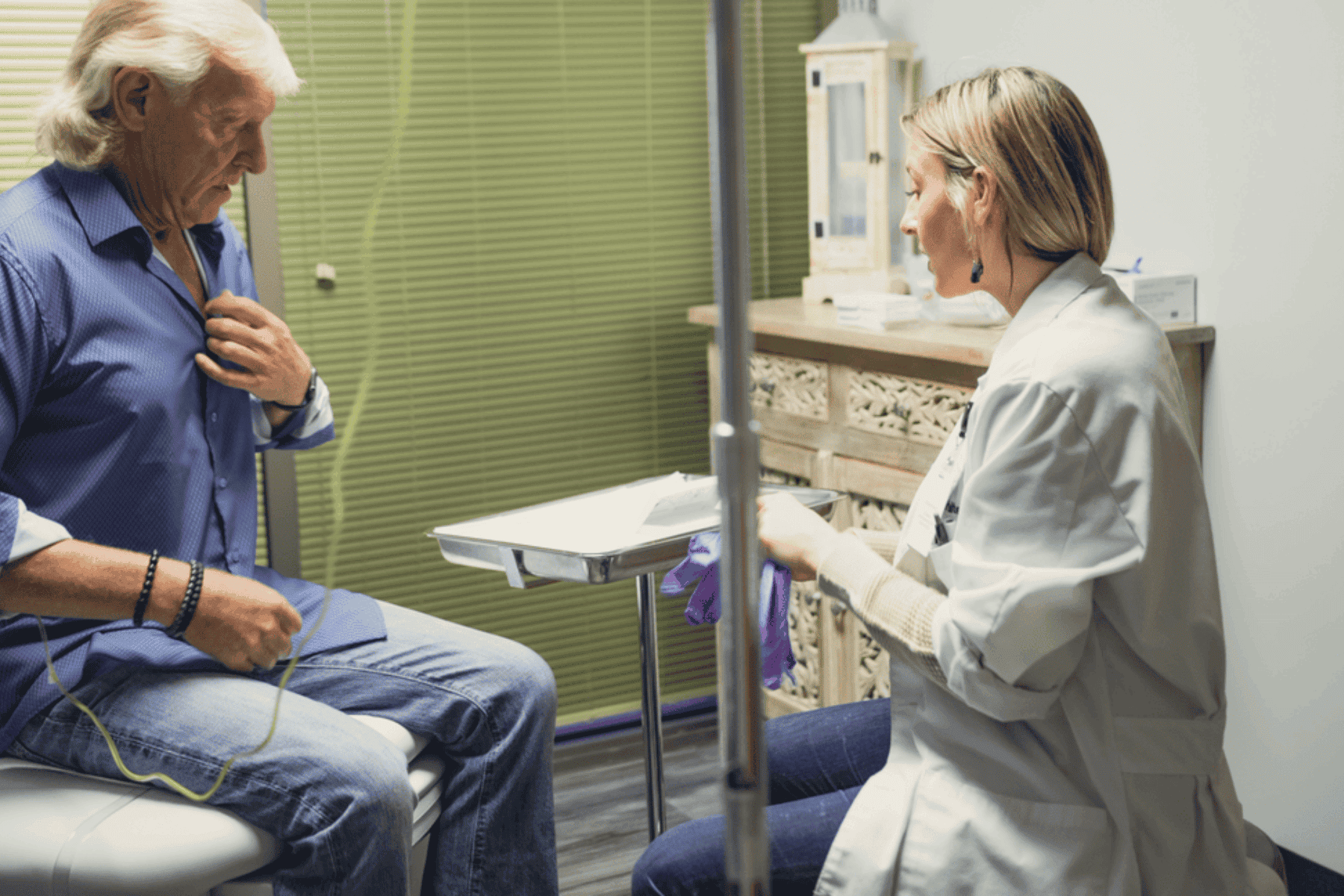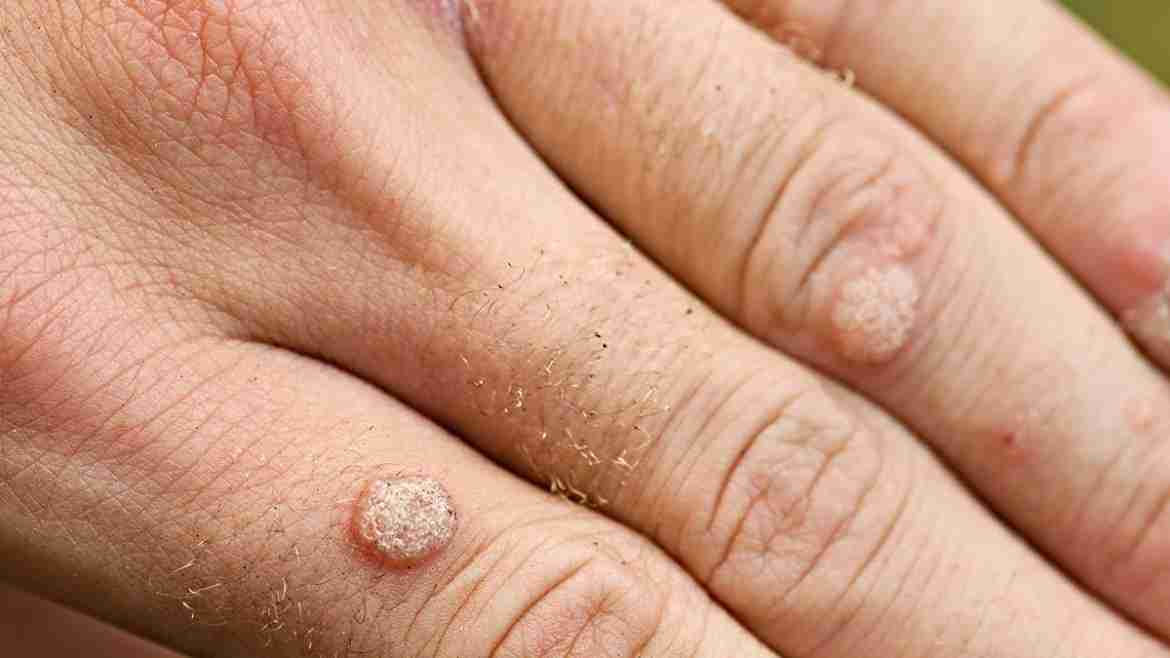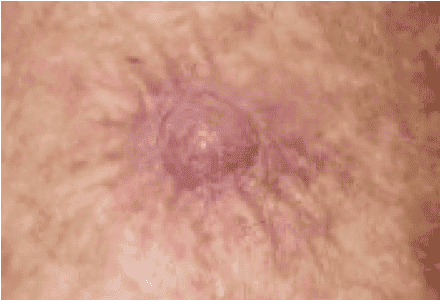The following guide explains how to identify Cancerous Warts.
Warts are not caused by cancer. However, some cancerous growths can resemble warts, making it difficult to figure out if a newly formed growth on the skin is a wart or skin cancer.
It’s important to have a doctor diagnose abnormal bumps or marks on the skin – a physician can examine growths that look like cancerous warts and take a biopsy if necessary to rule out cancer.
But understanding the difference in appearance between a cancerous wart-like growth and a wart can put an individual’s mind at ease until they get confirmation from their doctor.
This article will explain what skin cancer and warts look like, concerns about abnormal skin growth, holistic treatment options, and more.
Are Warts Cancerous?
While noticing a new wart can be alarming, the good news is that these skin growths are not caused by cancer, and there are no true cancerous warts.
It is, however, possible to mistake skin cancer for a common wart.
Warts vs. Cancerous Growths on the Skin – What’s the Difference?
Warts and wart-like cancerous growths might both appear as scaly or grainy lumps on the skin, and they’re both firm to the touch. But they’re caused by different health issues.
Warts Are Caused by a Virus
Common warts (verruca vulgaris) are caused by the human papillomavirus (HPV) – a common virus with over 150 strains [1].
Not all strains of HPV cause common warts, which usually develop on the hands and feet. There are over 30 strains of HPV that cause genital warts – warts that affect the genitals.
And 14 of these strains are known as high-risk strains because they can lead to the development of cervical cancer [2].
However, neither type of wart is linked to skin cancer.
Skin Cancer Is Caused by Overexposure to UV Rays
Skin cancer is usually caused by too much exposure to the sun’s ultraviolet rays [3], which can damage cellular DNA.
It’s also possible for skin cancer to develop when a person’s skin is in regular contact with certain chemicals, but the vast majority of cases are related to UV exposure from sunlight or tanning beds.
What Types of Skin Cancer Look Like Warts?
There are three main types of skin cancer: melanoma, basal cell carcinoma, and squamous cell carcinoma [4].
Melanoma, which is known as the most serious type of skin cancer because it’s most likely to spread, doesn’t cause wart-like growths.
Signs of melanoma include atypical moles, large brownish spots, or painful lesions [5].
If someone notices an abnormal wart-like growth on their skin, it’s more likely to be squamous cell carcinoma or basal cell carcinoma, which are known as nonmelanoma skin cancer [6].
Squamous cell carcinoma can show up on the skin as:
- Scaly, patches of skin
- Bumps that are firm and tender when touched
- Thickened skin
- Raised growths that look like common warts
Basal cell carcinoma can show up on the skin as:
- Pearl-shaped bumps with visible blood vessels
- Scar-like patches that feel firm
- Fleshy bumps with a depressed center
- Red flat spots that bleed easily and are tender to the touch
How to Identify Cancerous Warts
While skin cancer bumps and warts are both small and can look strange, there are distinctions.
- Common warts are usually found on the hands or feet – places that come into contact with shared surfaces. Nonmelanoma skin cancer is likely to occur in areas exposed to a lot of sunlight, such as the face, ears, neck, and shoulders.
- Dark, pinpoint dots are always visible under the top layer of a wart – these are clotted blood vessels [1]. Cancerous growths don’t have this characteristic.
- Warts won’t bleed on their own and aren’t usually painful (although plantar warts – warts on the feet – can feel mildly painful when standing or walking). Skin cancer might bleed or scab. They can also feel painful, tender, swollen, or itchy.
What to Do if a Wart Won’t Go Away
Even if left untreated, warts will eventually go away on their own, although it can take a year or more for the body to clear the virus [1].
If there’s a skin growth that persists for years, it should be checked by a medical professional to find out if it’s not actually a wart.
Skin cancer won’t go away on its own and may change in appearance or color over time.
When to See a Doctor for a Wart
If there’s any doubt that a wart could be skin cancer, make an appointment with a doctor or dermatologist right away. A wart that persists, hurts, changes in appearance, or looks suspicious should be checked out.
An experienced medical professional will be able to recognize if a wart is truly a wart or if it could be something else. If there’s any chance that it’s skin cancer, they’ll take a biopsy so they can rule out cancer.
A doctor or dermatologist can also offer treatment options for warts, such as salicylic acid, cryotherapy, or laser treatment.
And if it’s skin cancer, a physician can remove it for you. The good news is that nonmelanoma skin cancer is curable, and the survival rate is over 95% when detected and treated early [7].
Even after removing skin cancer, it’s still important to watch for signs of a recurrence and to take care of one’s health.
Contact Brio-Medical today to learn about natural therapies that can help support the body and encourage healing.
Our licensed medical experts provide a range of holistic treatments that are known to enhance vitality and strengthen the immune system.
Cancerous Warts FAQs
What are cancerous warts?
Cancerous warts, also known as malignant warts, are abnormal growths on the skin that have the potential to develop into cancer. They are typically caused by the Human Papillomavirus (HPV), which can lead to changes in the skin cells that result in the growth of warts. These warts have a chance of becoming cancerous if not treated or monitored carefully.
What are the signs and symptoms of cancerous warts?
Cancerous warts may look like ordinary warts but can sometimes display unusual characteristics such as bleeding, changes in color, size, or shape, and may cause pain or discomfort. The growths may also show irregular borders, may not heal, or they may spread rapidly. However, it’s important to note that only a healthcare provider can definitively diagnose a wart as cancerous.
How can you prevent cancerous warts?
Preventing cancerous warts involves strategies to limit the risk of HPV infection. This includes practicing safe sex, as certain strains of HPV are sexually transmitted. Additionally, HPV vaccines are available and are highly effective in preventing the types of HPV that most commonly cause cancerous warts. Avoiding contact with warts on other people and not picking or scratching warts can also prevent the spread and potential development into cancerous forms.
How are cancerous warts diagnosed?
The first step in diagnosing a cancerous wart involves a physical examination by a healthcare provider. If a wart looks suspicious, a biopsy may be performed where a small sample of the skin is taken and examined under a microscope by a pathologist. The pathologist can determine if the cells are cancerous or not. In some cases, additional imaging or lab tests may be needed.
What are the treatment options for cancerous warts?
Treatment for cancerous warts depends on the type, location, and stage of cancer. Options may include surgical removal of the wart, which can sometimes be done using local anesthetic. Other treatments can involve chemotherapy, radiation therapy, or immunotherapy. Sometimes, a combination of treatments may be used. It is critical to consult with a healthcare provider to determine the best course of action.
References
[1] Mayo Clinic Staff. “Common Warts.” Mayo Clinic, Mayo Foundation for Medical Education and Research, April 30, 2022, https://www.mayoclinic.org/diseases-conditions/common-warts/symptoms-causes/syc-20371125. Accessed August 1, 2022.
[2] Cleveland Clinic medical professional, reviewer. “HPV (Human Papillomavirus).” Cleveland Clinic, September, 18, 2018, https://my.clevelandclinic.org/health/diseases/11901-hpv-human-papilloma-virus. Accessed August 1, 2022.
[3] Cleveland Clinic medical professional, reviewer. “Skin Cancer.” Cleveland Clinic, November 19, 2021, https://my.clevelandclinic.org/health/diseases/15818-skin-cancer. Accessed August 1, 2022.
[4] Mayo Clinic Staff. “Skin Cancer.” Mayo Clinic, Mayo Foundation for Medical Education and Research, December 5, 2020, https://www.mayoclinic.org/diseases-conditions/skin-cancer/symptoms-causes/syc-20377605. Accessed August 1, 2022.
[5] Moffitt Cancer Center Staff. “Melanoma Cancer Treatment Information.” Moffitt Cancer Center, https://moffitt.org/cancers/melanoma/. Accessed August 1, 2022
[6] Moffitt Cancer Center Staff. “Skin Cancer Symptoms (Nonmelanoma).” Moffitt Cancer Center, https://moffitt.org/cancers/skin-cancer-nonmelanoma/signs-symptoms/. Accessed August 1, 2022.
[7] Moffitt Cancer Center Staff. “Skin Cancer Survival Rate (Nonmelanoma).” Moffitt Cancer Center, https://moffitt.org/cancers/skin-cancer-nonmelanoma/survival-rate/. Accessed August 1, 2022.







